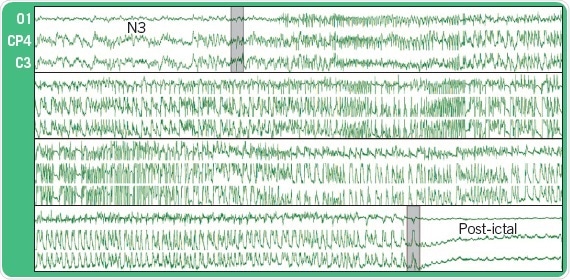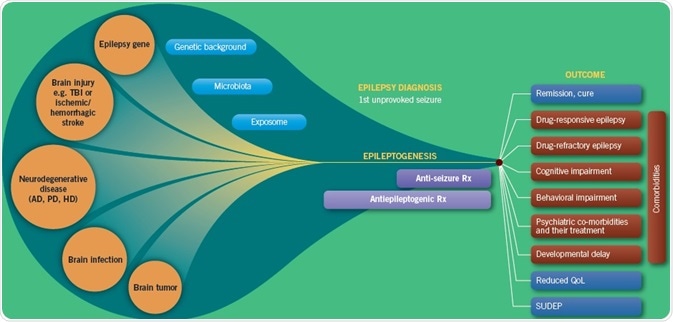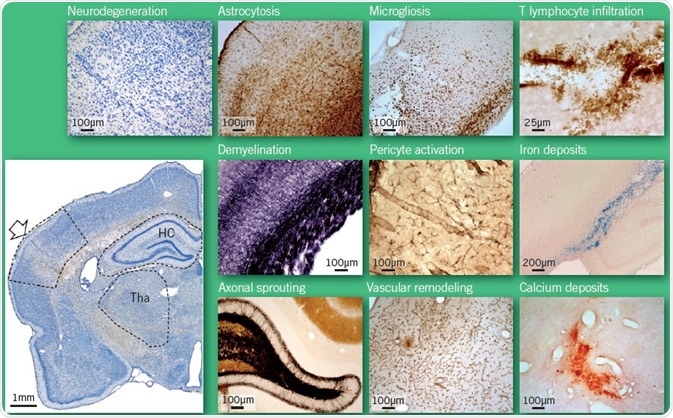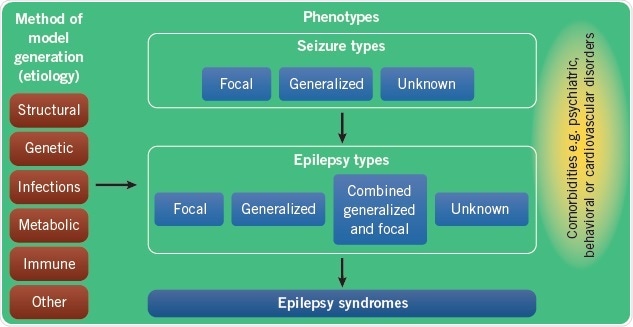The term “epilepsy” takes its origin from the Greek verb έπιλαµβάνειν, or epilambánein, which means “to be taken hold of”, “to be seized” or “to be attacked”. Hippocrates (400 BC) was the first to propose that epilepsy is a brain disorder that should be treated. WHO reports that 60 million people around the world suffer from epilepsy and a projected 2.4 million are diagnosed with epilepsy every year. Over 20 anti-seizure drugs are available on the market; however, medication cannot control seizures in around 30% of people with epilepsy.
Epilepsy Terminology
Seizure: temporary episodes of signs and/or symptoms as a result of abnormal, synchronous, or excessive neuronal activity in the brain. Seizures are classified into three types as per the International League Against Epilepsy (ILAE) classification: generalized onset, focal onset (earlier referred to as partial seizures), and unknown onset.
Epilepsy: a disease of the brain marked by any of the conditions given below:
- Diagnosis of an epilepsy syndrome
- Occurrence of at least two unprovoked (or reflex) seizures with an interval greater than 24 hours
- One unprovoked (or reflex) seizure and a possibility of more seizures comparable to the general recurrence risk (at least 60%) following two unprovoked seizures, taking place over the next 10 years
Epileptogenesis: development and growth of tissue that can create spontaneous seizures, leading to:
- Development of an epileptic condition and/or
- Progression of epilepsy once it is established
Epilepsy Syndrome: a group of attributes including seizure types, EEG, and imaging features likely to happen together. It usually has age-dependent characteristics like seizure triggers, age at onset and remission, diurnal variation, and at times prognosis. Moreover, it may show characteristic comorbidities like intellectual and psychiatric dysfunction, along with particular findings on EEG and imaging studies. In addition, specific prognostic, etiologic, and treatment implications may be related to an epilepsy syndrome.
Unprovoked Epileptic Seizure
An example of an electrographic seizure in a rat with structural epilepsy caused by traumatic brain injury is illustrated in Figure 1. Just like in humans, seizures normally last below 2–3 minutes. This seizure took place during the N3 phase of sleep. O1, CP4, and C3 correspond to positions of epidural electrodes. EEG recordings such as these are vital for epilepsy diagnosis.

Figure 1: EEG recording from three epidural electrodes during an epileptic seizure in a rat. N3 refers to the phase of the sleep cycle during which the seizure occured. Image credit: Tocris Bioscience
Molecular, Cellular, and Neuronal Network Pathologies in Epilepsy
Epileptogenesis can be induced by an “epilepsy gene”, chronic neurodegenerative diseases, or different kinds of acute brain insults or injuries, for example. The whole epileptogenic process is controlled by a person’s microbiota, genetic background, and exposome (non-genetic exposures of the person in a lifetime, such as medications, lifestyle, etc.). Epileptogenesis persists after epilepsy diagnosis (the incidence of the first unprovoked seizure) and results in different outcomes.

Figure 2: Triggers of epileptogenesis can lead to a number of different outcomes and comorbitites (QoL = quality-of-life; SUDEP = sudden unexpected death; Rx = treatment). Image credit: Tocris Bioscience
Brain Pathologies Associated with Epileptogenesis
Standard pathological findings in the brains of patients and animal models include inflammatory response, such as microgliosis, astrocytosis, and infiltration of T lymphocytes into brain parenchyma; neuronal cell death; chronic axonal changes, such as axonal sprouting (mossy fiber sprouting in the dentate gyrus) and demyelination; aggregation of iron and calcium; and vascular remodeling, such as blood-brain barrier dysfunction (pericyte activation).

Figure 3. Examples of common pathological markers of epilepsy in the rat brain (Open arrow = primary injury; HC = hippocampus; Tha = thalamus). Photomicrographs were taken from the outlined areas of the rat brain. Image credit: Tocris Bioscience
Animal Models of Epilepsy
Animal model generation starts with the choice of the technique of induction of epilepsy (etiology). The objective is to create an animal with (a) seizure phenotype(s) similar to human epilepsy type and seizure type, (b) comorbidities similar to a human epilepsy syndrome, and (c) molecular and cellular pathologies that represent variations in the ictogenic brain region of the corresponding epilepsy type or syndrome.

Figure 4: Successful animal models should encapsulate the various phenotypes of human epilepsy syndromes and their comorbidities. Image credit: Tocris Bioscience
Disease-Modification and Treatment of Epilepsy
A majority of the existing anti-seizure medicines target the GABAergic system or sodium channels to curb the excessive neuronal activity in the brain during seizures; however, they do not tackle the underlying brain pathology. Studies conducted more recently have concentrated on finding new kinds of treatments that may reverse or stop the epileptogenic variations in neuronal circuits that are caused due to a brain insult. Examples of interventions that have shown disease-modifying effects in proof-of concept studies include aspirin, ethosuximide, exercise, fluoxetine, a ketogenic diet, melatonin, rapamycin and zonisamide.
References
- Fisher, RS et al. (2014) Epilepsia 55 475
- Fisher, RS et al. (2017) Epilepsia 58 522
- Pitkänen, A and Engel, J Jr (2014) Neurotherapeutics 11 231
- Pitkänen, A et al. (ed.) (2017) Models of Seizures and Epilepsy, 2nd edition, Academic Press, Cambridge, USA
- Scheffer, IE et al. (2017) Epilepsia 58 512
About Tocris Bioscience
Tocris Bioscience is your trusted supplier of high-performance life science reagents, including receptor agonists & antagonists, enzyme inhibitors, ion channel modulators, fluorescent probes & dyes, and compound libraries. Our catalog consists of over 4,500 research tools, covering over 400 protein targets enabling you to investigate and modulate the activity of numerous signaling pathways and physiological processes.
We have been working with scientists for over 30 years to provide the life science community with research standards, as well as novel and innovative research tools. We understand the need for researchers to trust their research reagents, which is why we are committed to supplying our customers with the highest quality products available, so you can publish with confidence.
Tocris is part of the protein sciences division of Bio-Techne, which also includes the best in class brands R&D Systems, Novus Biologicals, ProteinSimple, and Advanced Cell Diagnostics. Bio-Techne has united these brands to provide researchers with a full portfolio of research reagents, assays, and protein platforms. For more information on Bio-Techne and its brands, please visit bio-techne.com.
Sponsored Content Policy: News-Medical.net publishes articles and related content that may be derived from sources where we have existing commercial relationships, provided such content adds value to the core editorial ethos of News-Medical.Net which is to educate and inform site visitors interested in medical research, science, medical devices, and treatments.